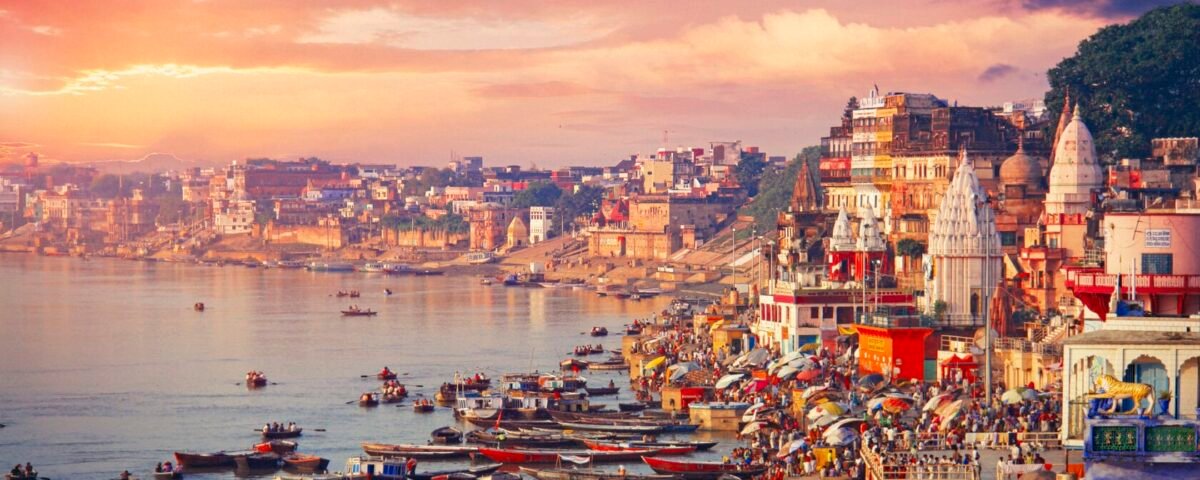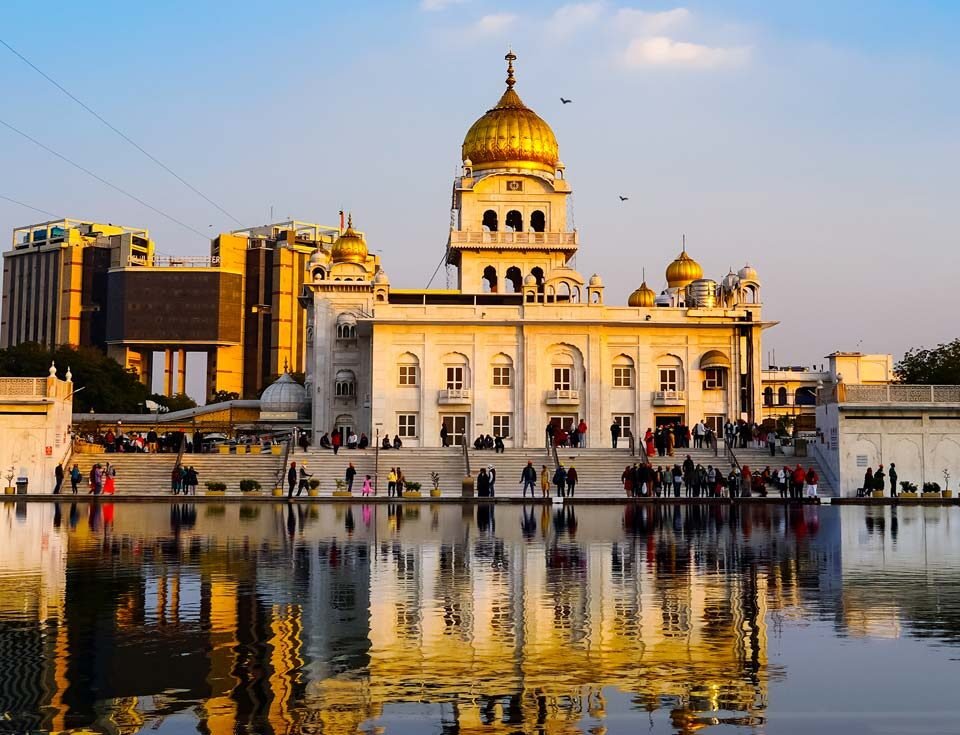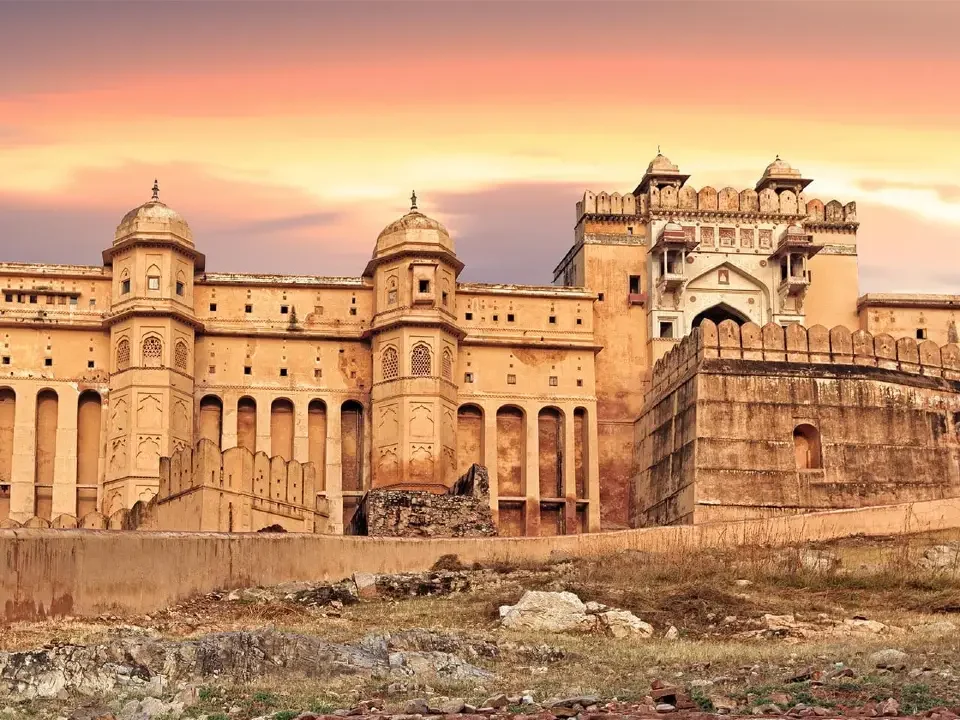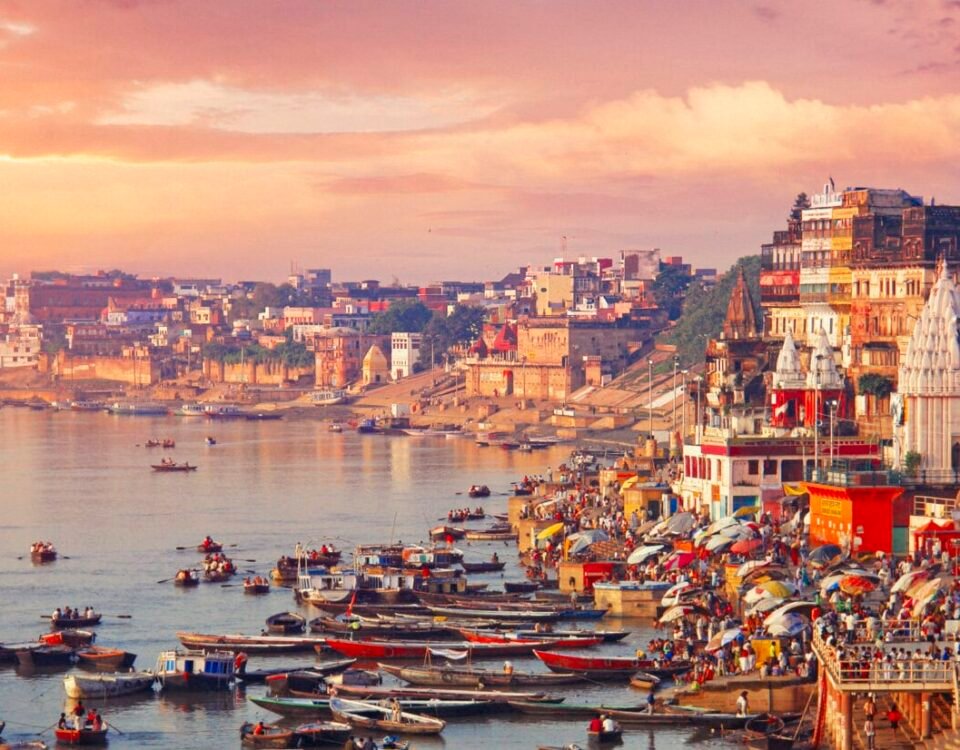Top Things to Do in Varanasi: 2-Day Itinerary + Night Tips & Hidden Gems

Complete Rishikesh Itinerary & Travel Guide: Best Places to Visit in 1 to 3 Days
October 11, 2025
Jaipur 3 Day Itinerary – Explore the Royal Charm of the Pink City
October 20, 2025Known as the spiritual heart of India, Varanasi is a city where faith flows as endlessly as the Ganges itself. Every sunrise here feels like a prayer, and every ghat tells centuries of stories. Whether you’re drawn by devotion, history, or sheer curiosity, Varanasi offers experiences that touch your soul.
Many travelers extend their Golden Triangle Tour with Varanasi to witness this ancient city’s divine energy — from the rhythmic chants of early morning rituals to the glowing spectacle of Ganga Aarti at night. In this 2-day itinerary, we’ll uncover the best things to do in Varanasi, explore its hidden gems, and help you make the most of your time in this sacred city.
Why Varanasi Should Be on Every Traveller’s List
Varanasi isn’t just one of the oldest cities in the world — it’s the living symbol of India’s spiritual heartbeat. The sacred Ganges River flows through its soul, carrying centuries of faith, rituals, and redemption. From sunrise prayers echoing across the Dashashwamedh Ghat to the quiet chants at Assi Ghat, every corner of this city vibrates with devotion and mysticism.
This is also where India’s timeless culture meets its eternal spirituality. Ancient temples, winding alleys, and vibrant street life make Varanasi a place where every traveler finds meaning — whether through meditation, art, or exploration. For many visitors who journey through Delhi, Agra, and Jaipur, the Golden Triangle Tour often culminates here, adding depth and divinity to their cultural discovery of India.
As you explore, make time for the majestic Kashi Vishwanath Temple, the beating heart of the city’s faith. It’s one of the 5 Famous Temples in North India every spiritual traveler must visit — not just for its architectural grace but for the overwhelming energy it radiates.
How to Plan a Perfect 2-Day Varanasi Trip
Planning a short trip to Varanasi can be deeply rewarding if done right. The ideal duration to truly soak in the city’s rhythm is 2 full days, enough to witness both sunrise rituals and nighttime aartis.
- Best Time to Visit: October to March, when the weather is cool and the ghats come alive with festivals and evening prayers.
- Getting There: Varanasi is well-connected by air and train from major cities like Delhi, Jaipur, and Agra.
- Getting Around: Auto-rickshaws and walking are the best ways to explore the old city lanes and riverfronts.
If you’re traveling from Jaipur or Delhi, consider combining your journey with a wildlife experience by taking the Golden Triangle Tour Package with Ranthambore. It offers a seamless blend of culture, architecture, and adventure — from spotting tigers in Ranthambore to finding peace by the Ganges in Varanasi.
Day 1 Itinerary – Discovering the Soul of the City
Your first day in Varanasi is all about feeling the pulse of this ancient city — the chants, the chaos, and the calm that somehow coexist in perfect harmony. From the gentle sunrise over the Ganges to the mesmerizing glow of the evening Aarti, every hour in Varanasi is a sensory experience that connects you to something eternal.
Sunrise Boat Ride on the Ganges River
Start your morning before dawn with a serene boat ride on the Ganges River, one of the most spiritual experiences India offers. As the first rays of light touch the water, the ghats come alive — priests performing rituals, locals offering prayers, and the faint sound of temple bells echoing through the mist.
This peaceful experience lets you witness Varanasi at its most sacred. It’s a highlight for anyone on a Varanasi Tour, offering a front-row seat to the city’s timeless rhythm and spiritual devotion. Don’t forget to carry a camera; the golden reflections of the morning sun create breathtaking frames of daily life on the riverbanks.
Visit Kashi Vishwanath Temple & Old City Walk
No trip to Varanasi is complete without visiting the Kashi Vishwanath Temple, one of India’s holiest shrines dedicated to Lord Shiva. Dating back to the 18th century, this temple is the beating heart of the city’s spirituality, drawing millions of devotees every year.
- Opening Hours: 4:00 AM – 11:00 PM
- Dress Code: Modest clothing — shoulders and knees covered.
- Getting There: Located in the Vishwanath Gali area, easily accessible from Godowlia Chowk by foot or cycle rickshaw.
As you navigate the narrow alleys surrounding the temple, you’ll find traditional shops selling silk sarees, sandalwood, and handcrafted souvenirs. This area beautifully captures the old-world charm of Varanasi. For those exploring India’s sacred heritage, the Kashi Vishwanath Temple is among the 5 Famous Temples in North India that truly define devotion and architectural brilliance.
Evening Ganga Aarti at Dashashwamedh Ghat
As dusk falls, make your way to the iconic Dashashwamedh Ghat, where the evening Aarti transforms the riverfront into a celestial stage. The sight of saffron-clad priests performing synchronized rituals, the rhythmic sound of conch shells, and the reflection of countless diyas (lamps) floating on the Ganges create an atmosphere that’s both divine and unforgettable.
The Ganga Aarti in Varanasi is one of India’s most powerful spiritual experiences — a must-see for anyone seeking to feel the energy and devotion that define this ancient city. Arrive at least an hour early for a good spot, or book a boat view to watch the ceremony unfold from the water for a truly magical perspective.
Day 2 Itinerary – From Sarnath to Spiritual Serenity
Your second day in Varanasi takes you beyond the bustling ghats and into the quieter realms of spirituality, art, and local culture. It’s a perfect balance of reflection and exploration — from the peaceful ruins of Sarnath to the colorful markets and soulful evenings at Assi Ghat.
Visit Sarnath – Where Buddha Spoke His First Sermon
Begin your day with a short drive to Sarnath, just 10 km from the city center. This sacred site marks the place where Lord Buddha delivered his first sermon after enlightenment. The sprawling complex features the Dhamek Stupa, ancient monasteries, and the Sarnath Archaeological Museum, home to the famous Lion Capital of Ashoka, India’s national emblem.
Sarnath exudes a sense of calm, making it ideal for meditation or quiet reflection. Walk through the manicured lawns, explore Buddhist relics, and feel the spiritual continuity between Hinduism and Buddhism that defines this region. Early mornings here are peaceful, with fewer crowds and beautiful natural light for photography.
Cultural Trails and Shopping in Old Varanasi
Return to the city and dive into its vibrant culture. Spend your afternoon exploring the bustling bazaars near Vishwanath Gali and Godowlia Market, where artisans weave shimmering Banarasi silk sarees — an art form that dates back centuries. You’ll also find brass idols, wooden toys, and miniature paintings that reflect the soul of traditional craftsmanship.
For travelers who appreciate detailed artistry and royal design, consider continuing your Indian journey westward to Jaipur to witness the stunning Hawa Mahal Jaipur — an architectural gem that shares the same cultural richness you experience here in Varanasi’s markets.
Tip: Don’t hesitate to bargain — it’s part of the experience — and always buy authentic silk from government-certified stores to ensure quality.
Evening Walks and Food at Assi Ghat
As night approaches, unwind at Assi Ghat, one of Varanasi’s most relaxed and youthful ghats. The evening atmosphere is filled with music, laughter, and the aroma of freshly brewed chai. Locals and travelers gather to watch street performances, poetry sessions, and live classical music — creating a perfect end to your day.
The riverside food stalls here are famous for chaat, kullhad chai, and malaiyyo — a winter delicacy you must try. Take a slow walk by the water, or simply sit back and watch the flickering diyas float away into the river’s current.
Those who’ve witnessed the Ganga Aarti in Rishikesh often find the Varanasi one equally enchanting, yet more intense — an experience that captures the very essence of India’s spiritual diversity.
Offbeat Experiences and Hidden Gems
Beyond the main ghats and temples, Varanasi hides countless secrets that reward those who venture off the usual tourist path. If you want to experience the city’s quieter, more introspective side, spend a few hours exploring its lesser-known landmarks.
Start with the Nepali Temple, also known as the Kathwala Temple, built in the style of Kathmandu’s Pashupatinath shrine. Its wooden architecture and serene location on Lalita Ghat offer a refreshing change from the city’s crowded spots. Nearby, the Alamgir Mosque—a stunning blend of Islamic and Hindu design—sits gracefully along the Ganges, offering panoramic views of the river.
For a deeper, more reflective experience, visit Manikarnika Ghat, the city’s oldest and most sacred cremation ghat. While solemn, it’s a profound reminder of the Hindu belief in the cycle of life and liberation. Travelers seeking peace often head further south, where smaller ghats like Kedar Ghat and Harishchandra Ghat provide tranquil spots to observe daily rituals away from the bustle.
If you’re fascinated by India’s cultural continuum, consider extending your trip beyond Uttar Pradesh. Journey west to Rajasthan — the land of forts and palaces — where you can explore the majestic Jaisalmer Fort, one of the world’s few “living forts.” It’s a golden sandstone marvel that connects seamlessly with the spiritual legacy of Varanasi, offering a powerful contrast between the sacred and the royal.
Best Things to Do in Varanasi at Night
When the sun sets over the Ganges, Varanasi transforms into something almost otherworldly. The night brings a sense of calm — the sound of bells fading into silence, lamps flickering along the ghats, and the city exhaling after a long day. This is when you truly feel the heartbeat of Kashi.
Among the best things to do in Varanasi at night, a boat ride under the moonlight tops the list. Watching the shimmering reflection of a thousand diyas on the water creates a surreal and meditative experience. Many visitors also enjoy evening walks along Assi Ghat or Rajendra Prasad Ghat, where musicians perform live bhajans and locals sip steaming cups of tea by the river.
The night food walks are another unmissable adventure — from tangy tamatar chaat to creamy rabri and kulhad desserts, Varanasi’s street food scene lights up after dark. You’ll also find occasional cultural events and open-air concerts organized along the ghats, especially during festivals and weekends.
And if the journey through spirituality leaves you wanting more of India’s grandeur, continue westward through the desert state with the Best Rajasthan Tour Package. It’s the perfect follow-up to Varanasi’s sacred serenity — blending royal heritage, colorful cities, and timeless landscapes into one unforgettable Indian experience.
Travel Tips & Practical Information
Before you set out to explore Varanasi, a little preparation goes a long way. The city’s energy is intense yet beautiful, and being mindful of a few essentials ensures your journey is both comfortable and respectful.
Best Time to Visit:
October to March is the ideal window, when the weather is pleasant, the skies are clear, and the Ganges ghats buzz with activity. The winter months also host major festivals like Dev Deepawali, when the entire riverfront glows under countless lamps.
What to Pack:
Carry light, breathable clothes for the day and a shawl or jacket for cool evenings. Comfortable footwear is a must — you’ll be walking through narrow lanes and steps along the ghats. Don’t forget sunscreen, a reusable water bottle, and a small offering if you plan to attend evening rituals.
Respectful Behavior Near Ghats:
Remember, Varanasi is not just a tourist spot — it’s a sacred space for millions. Avoid photographing cremation ceremonies, dress modestly, and maintain silence during prayers and rituals. Always remove footwear before entering temples or walking near the water during aarti.
Safety Tips for Night Walks:
Varanasi is generally safe, but it’s best to explore well-lit ghats and stay within crowded areas after dark. Use registered boat services, keep your belongings close, and trust local guides for directions or night tours.
For those who wish to add a touch of adventure and wildlife to their spiritual journey, many travelers extend their trip through the Golden Triangle Tour With Ranthambore. It’s a beautiful contrast — from serene prayers by the Ganges to thrilling tiger safaris in Rajasthan’s dense jungles.
Related Experiences Beyond Varanasi
Varanasi often marks the beginning of a deeper exploration across India’s cultural and spiritual map. If you’re ready to travel beyond the ghats, here are a few remarkable journeys to consider:
- Golden Triangle Tour with Rishikesh – Perfect for spiritual seekers who want to pair Varanasi’s sacred rituals with Rishikesh’s peaceful yoga culture and Ganga Aarti.
- Famous Forts Of Rajasthan – Ideal for architecture lovers; explore royal heritage through massive citadels, intricate palaces, and desert landscapes.
- Ranthambore Fort – A must-visit for wildlife and history fans. Nestled inside Ranthambore National Park, this fort offers incredible views and a peek into Rajasthan’s royal past.
Plan your next journey with our curated itineraries from Varanasi to Rajasthan, and experience the seamless blend of spirituality, adventure, and heritage that makes India truly timeless.
Q1: What is the best time to visit Varanasi?
The best time to visit Varanasi is from October to March, when the temperatures are pleasant, and the ghats are lively with festivals and cultural events. Winter mornings offer the most picturesque boat rides, while evenings are perfect for attending the Aarti without the summer heat.
Q2: What are the must-see places in 2 days?
If you’re exploring Varanasi in 2 days, don’t miss the Ganga sunrise boat ride, Kashi Vishwanath Temple, Sarnath, and the Ganga Aarti at Dashashwamedh Ghat. Add an evening stroll through Assi Ghat and a visit to the Nepali Temple for a complete experience.
Q3: How late does the Ganga Aarti start?
The Ganga Aarti typically begins around 6:45 PM in winter and 7:00 PM in summer, right after sunset. It lasts for about 45 minutes, during which priests perform elaborate rituals with lamps, flowers, and conch shells along the riverbanks. Arrive early to secure a good viewing spot or book a boat seat for the best perspective.
Q4: Is it safe to attend the Aarti at night?
Yes, attending the Aarti at night is safe, especially around Dashashwamedh Ghat and Assi Ghat, which remain well-lit and crowded with locals and travelers. Just keep an eye on your belongings, avoid isolated lanes, and use recognized guides or boat services.
Q5: Can I combine my trip with Rajasthan or Rishikesh?
Absolutely. Many travelers merge their journey through a Best Rajasthan Travel Itinerary to experience the royal heritage of Jaipur, Jodhpur, and Udaipur after exploring Varanasi’s spiritual depth. Alternatively, you can extend your route to Rishikesh for yoga retreats and serene river views — creating the perfect balance between devotion, adventure, and peace.
Conclusion
Varanasi doesn’t just show you India — it makes you feel its soul. From the chants that rise with the sunrise to the glow of a thousand diyas reflecting on the Ganges, every moment here carries a rhythm of devotion, life, and liberation. The city teaches you that spirituality isn’t found in stillness alone — it’s in the chaos, the color, and the collective faith that unites everyone who walks its ghats.
If you seek an experience that goes beyond sightseeing — one that stays with you long after you’ve left — then Varanasi is your calling.
Ready to experience it all? Start your Golden Triangle Tour with Varanasi today and discover India’s spiritual essence — a journey that connects history, divinity, and the timeless flow of the Ganges.




